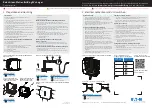
37
DEFROSTING
Windshield fogging and frosting is caused
by warm, humid air coming in contact with a
cold windshield, which causes the moisture
in the air to condense and possibly freeze if
the windshield is cold enough. The warmer
the windshield, the less moisture will con-
dense on it. During initial warm-up, the de-
froster blowers should be operated at low
speed to preheat the inside of the windshield
glass. If the defroster is not turned on until
the condensation starts, it is more difficult to
heat the glass and overcome condensation. As
passengers are loaded onto the bus, the mois-
ture content of the air inside the bus increases.
This moisture content tends to be lowered by
opening the heater fresh air inlet. The most
difficult defrosting conditions will be encoun-
tered when there is a large passenger load
which must remain on the bus for extended
periods of time, such as on a charter or over-
the-road activity trip. Each passenger continu-
ally adds to the moisture content of the air, and after a period of time, the humidity can become quite high.
This condition can be improved by slightly opening the forward driver’s window, allowing the moist air
to escape into the low pressure area outside the bus at that location.
CARE AND CLEANING OF DEFROSTER FANS
Defroster fan motor bearings are lifetime lubricated and do not require maintenance. Occasional cleaning
of the blade and guard with a soft bristle brush and a vacuum cleaner or compressed air will help to maintain
efficiency. As with any other fan, if the blade is damaged or imbalanced, vibrational damage can occur to the
motor or surrounding components, so the blade should be replaced immediately.
WARNING: Do not operate a defroster fan without the fan guard properly installed.
Procedure:
1. Remove front half of fan guard by gently separat-
ing plastic tabs with a screwdriver or other hard in-
strument. Be careful not to damage tabs, as these
connect the front half of the fan guard to the rear
half. Removing the guard will provide access to
the fan should it need to be replaced.
2. To remove the fan blade, use a 3/32" Allen wrench
in the set screw located directly behind the fan. This
should loosen the fan blade for removal.
3. The rear half of the fan guard can also be removed if
necessary. After removing the fan, remove the two
nuts and washers on either side of the center point
and lift guard off.
DASH COVER
DASH PANEL
FILTER ACCESS PANEL
STEPWELL AREA
Содержание TC/2000
Страница 1: ...Owner s Manual TC 2000 ...
Страница 3: ...2 ...
Страница 106: ...105 NOTES ...
Страница 111: ...Part Number 1919331 Blue Bird Corporation P O Box 937 Fort Valley GA 31030 ...
















































